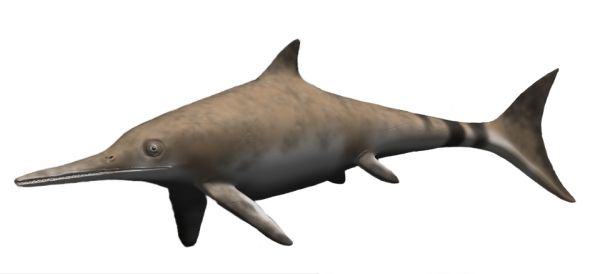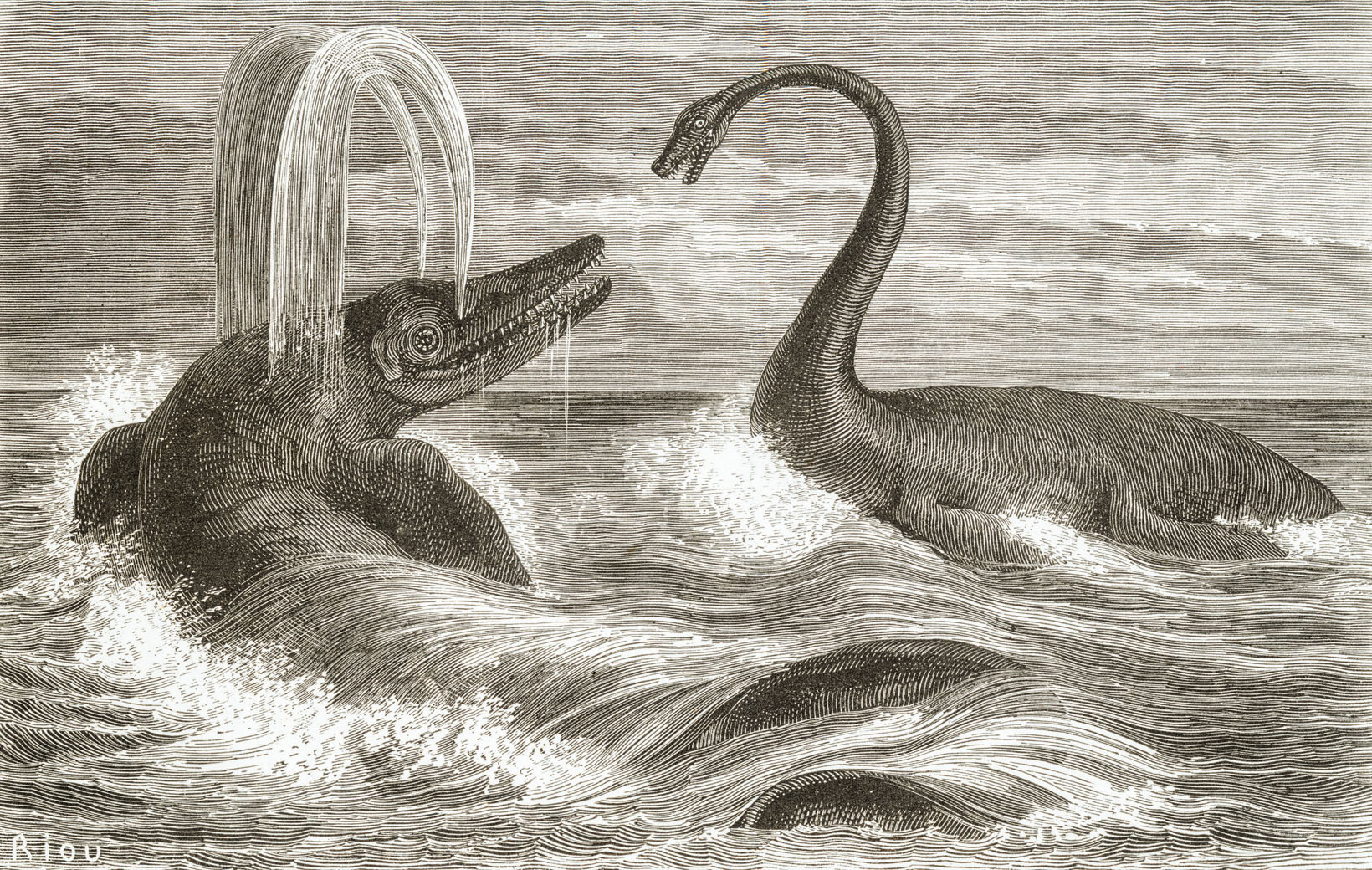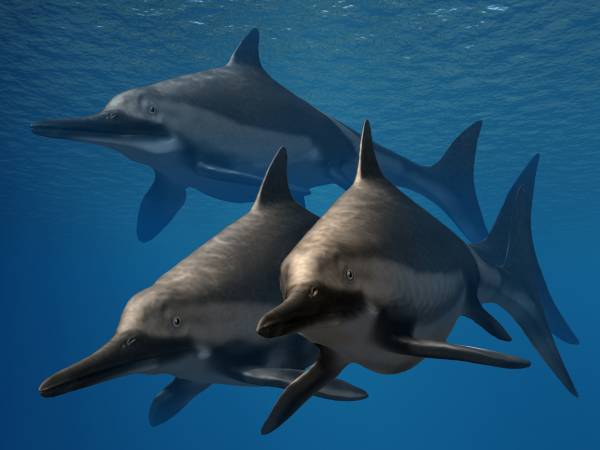|
Thunnosauria
Thunnosauria (Ancient Greek, Greek for "tuna lizard" – ''thunnos'' meaning "tuna" and ''sauros'' meaning "lizard") is an extinct clade of parvipelvian ichthyosaurs from the Early Jurassic to the early Late Cretaceous (Hettangian–Cenomanian) of Asia, Australia, Europe, North America, and South America. Named by Ryosuke Motani in 1999, it contains the basal taxa ''Ichthyosaurus'' and ''Stenopterygius'' and the family Ophthalmosauridae. In thunnosaurs, the fore fin is at least twice as long as the hind fin. Phylogeny Thunnosauria is a node-based taxon defined in 1999 as "the last common ancestor of ''Ichthyosaurus communis'' and ''Stenopterygius quadriscissus'' and all of its descendants". The cladogram below follows the topology from a 2010 analysis by Patrick S. Druckenmiller and Erin E. Maxwell. References Hettangian first appearances Ichthyosauria Turonian extinctions {{ichthyosaur-stub ... [...More Info...] [...Related Items...] OR: [Wikipedia] [Google] [Baidu] |
Ichthyosaur
Ichthyosauria is an order of large extinct marine reptiles sometimes referred to as "ichthyosaurs", although the term is also used for wider clades in which the order resides. Ichthyosaurians thrived during much of the Mesozoic era; based on fossil evidence, they first appeared around 250 million years ago ( Ma) and at least one species survived until about 90 million years ago, into the Late Cretaceous. During the Early Triassic epoch, ichthyosaurs and other ichthyosauromorphs evolved from a group of unidentified land reptiles that returned to the sea, in a development similar to how the mammalian land-dwelling ancestors of modern-day dolphins and whales returned to the sea millions of years later, which they gradually came to resemble in a case of convergent evolution. Ichthyosaurians were particularly abundant in the Late Triassic and Early Jurassic periods, until they were replaced as the top aquatic predators by another marine reptilian group, the Plesiosauria, i ... [...More Info...] [...Related Items...] OR: [Wikipedia] [Google] [Baidu] |
Ichthyosauridae
Ichthyosauridae is an extinct family (biology), family of thunnosaur ichthyosaurs from the latest Triassic and Early Jurassic (Rhaetian to Pliensbachian stages) of Europe, and possibly also from the middle Early Cretaceous (Hauterivian or Barremian stage) of Iraq. Named by Charles Lucien Bonaparte, in 1841 in paleontology, 1841, it is usually thought to contain a single genus, ''Ichthyosaurus'', which is known from several species from the Early Jurassic. In 2013, Fischer ''et al.'' named and described ''Malawania anachronus'' from the middle Early Cretaceous of Iraq. It was found to share several synapomorphies with the type species of this family, ''Ichthyosaurus communis'', and a large phylogenetic analysis recovered these species as sister taxa. Despite its geologically younger age, ''M. anachronus'' was also assigned to Ichthyosauridae. Phylogeny Fischer ''et al.'' (2013) applied the name Ichthyosauridae Bonaparte, 1841 for the clade that contains ''Malawania anachronus'' and ... [...More Info...] [...Related Items...] OR: [Wikipedia] [Google] [Baidu] |
Chacaicosaurus
''Chacaicosaurus'' is a genus of neoichthyosaurian ichthyosaur known from the Middle Jurassic of Argentina. The single known specimen of this genus was excavated from the Los Molles Formation in Neuquén Province, and is housed at the Museo Olsacher under the specimen number MOZ 5803. This specimen consists of a skull, forelimb, some vertebrae, and some additional postcranial elements. The genus was named by Marta Fernández in 1994, and contains a single species, ''Chacaicosaurus cayi'', making it the first named distinctive ichthyosaur from the Bajocian stage. It is a medium-sized ichthyosaur with a very long snout, which bears a ridge running along each side. The forelimbs of ''Chacaicosaurus'' are small and contain four main digits. Different authors have classified ''Chacaicosaurus'' in different ways; some consider it a thunnosaur closely related to the ophthalmosaurids, others instead place it outside of Thunnosauria, often near ''Hauffiopteryx''. However, as it is very sim ... [...More Info...] [...Related Items...] OR: [Wikipedia] [Google] [Baidu] |
Early Jurassic
The Early Jurassic Epoch (geology), Epoch (in chronostratigraphy corresponding to the Lower Jurassic series (stratigraphy), Series) is the earliest of three epochs of the Jurassic Period. The Early Jurassic starts immediately after the Triassic–Jurassic extinction event, 201.3 Ma (million years ago), and ends at the start of the Middle Jurassic 174.7 ±0.8 Ma. Certain rocks of marine origin of this age in Europe are called "Lias Group, Lias" and that name was used for the period, as well, in 19th-century geology. In southern Germany rocks of this age are called Black Jurassic. Origin of the name Lias There are two possible origins for the name Lias: the first reason is it was taken by a geologist from an England, English quarryman's dialect pronunciation of the word "layers"; secondly, sloops from north Cornwall, Cornish ports such as Bude would sail across the Bristol Channel to the Vale of Glamorgan to load up with rock from coastal limestone quarries (lias and Carbonif ... [...More Info...] [...Related Items...] OR: [Wikipedia] [Google] [Baidu] |
Ichthyosaurus Communis
''Ichthyosaurus'' (derived from Greek () meaning 'fish' and () meaning 'lizard') is a genus of ichthyosaurs from the Early Jurassic (Hettangian - Pliensbachian) of Europe (Belgium, England, Germany and Portugal). Some specimens of the ichthyosaurid ''Protoichthyosaurus'' from England and Switzerland have been erroneously referred to this genus in the past. It is among the best known ichthyosaur genera, as it is the type genus of the order Ichthyosauria.Maisch MW, Matzke AT. 2000. The Ichthyosauria. ''Stuttgarter Beiträge zur Naturkunde, Serie B (Geologie und Paläontologie)'' 298: 1-159McGowan C, Motani R. 2003. Ichthyopterygia. – In: Sues, H.-D. (ed.): ''Handbook of Paleoherpetology, Part 8, Verlag Dr. Friedrich Pfeil'', 175 pp., 101 figs., 19 plts; München History of discovery ''Ichthyosaurus'' was the first complete fossil to be discovered in the early 19th century by Mary Anning in England; the holotype of ''I. communis'', no coll. number given,Judy A. Massare & Dea ... [...More Info...] [...Related Items...] OR: [Wikipedia] [Google] [Baidu] |
South America
South America is a continent entirely in the Western Hemisphere and mostly in the Southern Hemisphere, with a considerably smaller portion in the Northern Hemisphere. It can also be described as the southern Subregion#Americas, subregion of the Americas. South America is bordered on the west by the Pacific Ocean, on the north and east by the Atlantic Ocean, and to the south by the Drake Passage; North America and the Caribbean Sea lie to the northwest. The continent includes twelve sovereign states: Argentina, Bolivia, Brazil, Chile, Colombia, Ecuador, Guyana, Paraguay, Peru, Suriname, Uruguay, and Venezuela; two dependent territory, dependent territories: the Falkland Islands and South Georgia and the South Sandwich Islands; and one administrative division, internal territory: French Guiana. The Dutch Caribbean ABC islands (Leeward Antilles), ABC islands (Aruba, Bonaire, and Curaçao) and Trinidad and Tobago are geologically located on the South-American continental shel ... [...More Info...] [...Related Items...] OR: [Wikipedia] [Google] [Baidu] |
Ichthyosaurus
''Ichthyosaurus'' (derived from Greek () meaning 'fish' and () meaning 'lizard') is a genus of ichthyosaurs from the Early Jurassic (Hettangian - Pliensbachian) of Europe (Belgium, England, Germany and Portugal). Some specimens of the ichthyosaurid '' Protoichthyosaurus'' from England and Switzerland have been erroneously referred to this genus in the past. It is among the best known ichthyosaur genera, as it is the type genus of the order Ichthyosauria.Maisch MW, Matzke AT. 2000. The Ichthyosauria. ''Stuttgarter Beiträge zur Naturkunde, Serie B (Geologie und Paläontologie)'' 298: 1-159McGowan C, Motani R. 2003. Ichthyopterygia. – In: Sues, H.-D. (ed.): ''Handbook of Paleoherpetology, Part 8, Verlag Dr. Friedrich Pfeil'', 175 pp., 101 figs., 19 plts; München History of discovery ''Ichthyosaurus'' was the first complete fossil to be discovered in the early 19th century by Mary Anning in England; the holotype of ''I. communis'', no coll. number given,Judy A. Massare & D ... [...More Info...] [...Related Items...] OR: [Wikipedia] [Google] [Baidu] |
Stenopterygius
''Stenopterygius'' is an extinct genus of thunnosaur ichthyosaur known from Europe (England, France, Germany, Luxembourg and Switzerland). History ''Stenopterygius'' was originally named by Quenstedt in 1856 as a species of ''Ichthyosaurus'', ''I. quadriscissus''. Otto Jaekel in 1904 reassigned it to its own genus, ''Stenopterygius''. The type species is therefore ''Ichthyosaurus quadriscissus'' but the ''combinatio nova'' ''Stenopterygius quadriscissus''. The generic name is derived from ''stenos'', Greek for "narrow", and ''pteryx'' (πτερυξ), Greek for "fin" or "wing".McGowan C, Motani R. 2003. Ichthyopterygia. – In: Sues, H.-D. (ed.): ''Handbook of Paleoherpetology, Part 8, Verlag Dr. Friedrich Pfeil'', 175 pp., 101 figs., 19 plts; München The specific name means "split in four" referring to the presumed condition of the first finger. Description ''Stenopterygius'' was a medium-sized ichthyosaur, with ''S. quadriscissus'' and ''S. triscissus'' reaching a maximum len ... [...More Info...] [...Related Items...] OR: [Wikipedia] [Google] [Baidu] |
Node-based Taxon
Phylogenetic nomenclature is a method of nomenclature for taxon, taxa in biology that uses phylogenetics, phylogenetic definitions for taxon names as explained below. This contrasts with Biological classification, the traditional method, by which taxon names are defined by a ''Type (biology), type'', which can be a specimen or a taxon of lower Taxonomic rank, rank, and a description in words. Phylogenetic nomenclature is regulated currently by the ''PhyloCode, International Code of Phylogenetic Nomenclature'' (''PhyloCode''). Definitions Phylogenetic nomenclature associates names with clades, groups consisting of an ancestor and all its descendants. Such groups are said to be Monophyly, monophyletic. There are slightly different methods of specifying the ancestor, which are discussed below. Once the ancestor is specified, the meaning of the name is fixed: the ancestor and all organisms which are its descendants are included in the taxon named. Listing all these organisms (i.e. prov ... [...More Info...] [...Related Items...] OR: [Wikipedia] [Google] [Baidu] |
Cladogram
A cladogram (from Greek language, Greek ''clados'' "branch" and ''gramma'' "character") is a diagram used in cladistics to show relations among organisms. A cladogram is not, however, an Phylogenetic tree, evolutionary tree because it does not show how ancestors are related to descendants, nor does it show how much they have changed, so many differing evolutionary trees can be consistent with the same cladogram. A cladogram uses lines that branch off in different directions ending at a clade, a group of organisms with a last common ancestor. There are many shapes of cladograms but they all have lines that branch off from other lines. The lines can be traced back to where they branch off. These branching off points represent a hypothetical ancestor (not an actual entity) which can be inferred to exhibit the traits shared among the terminal taxa above it. This hypothetical ancestor might then provide clues about the order of evolution of various features, adaptation, and other e ... [...More Info...] [...Related Items...] OR: [Wikipedia] [Google] [Baidu] |
Stenopterygius Quadriscissus
''Stenopterygius'' is an extinct genus of thunnosaur ichthyosaur known from Europe (England, France, Germany, Luxembourg and Switzerland). History ''Stenopterygius'' was originally named by Quenstedt in 1856 as a species of ''Ichthyosaurus'', ''I. quadriscissus''. Otto Jaekel in 1904 reassigned it to its own genus, ''Stenopterygius''. The type species is therefore ''Ichthyosaurus quadriscissus'' but the ''combinatio nova'' ''Stenopterygius quadriscissus''. The generic name is derived from ''stenos'', Greek for "narrow", and ''pteryx'' (πτερυξ), Greek for "fin" or "wing".McGowan C, Motani R. 2003. Ichthyopterygia. – In: Sues, H.-D. (ed.): ''Handbook of Paleoherpetology, Part 8, Verlag Dr. Friedrich Pfeil'', 175 pp., 101 figs., 19 plts; München The specific name means "split in four" referring to the presumed condition of the first finger. Description ''Stenopterygius'' was a medium-sized ichthyosaur, with ''S. quadriscissus'' and ''S. triscissus'' reaching a maximum len ... [...More Info...] [...Related Items...] OR: [Wikipedia] [Google] [Baidu] |
Europe
Europe is a continent located entirely in the Northern Hemisphere and mostly in the Eastern Hemisphere. It is bordered by the Arctic Ocean to the north, the Atlantic Ocean to the west, the Mediterranean Sea to the south, and Asia to the east. Europe shares the landmass of Eurasia with Asia, and of Afro-Eurasia with both Africa and Asia. Europe is commonly considered to be Boundaries between the continents#Asia and Europe, separated from Asia by the Drainage divide, watershed of the Ural Mountains, the Ural (river), Ural River, the Caspian Sea, the Greater Caucasus, the Black Sea, and the waterway of the Bosporus, Bosporus Strait. "Europe" (pp. 68–69); "Asia" (pp. 90–91): "A commonly accepted division between Asia and Europe ... is formed by the Ural Mountains, Ural River, Caspian Sea, Caucasus Mountains, and the Black Sea with its outlets, the Bosporus and Dardanelles." Europe covers approx. , or 2% of Earth#Surface, Earth's surface (6.8% of Earth's land area), making it ... [...More Info...] [...Related Items...] OR: [Wikipedia] [Google] [Baidu] |








